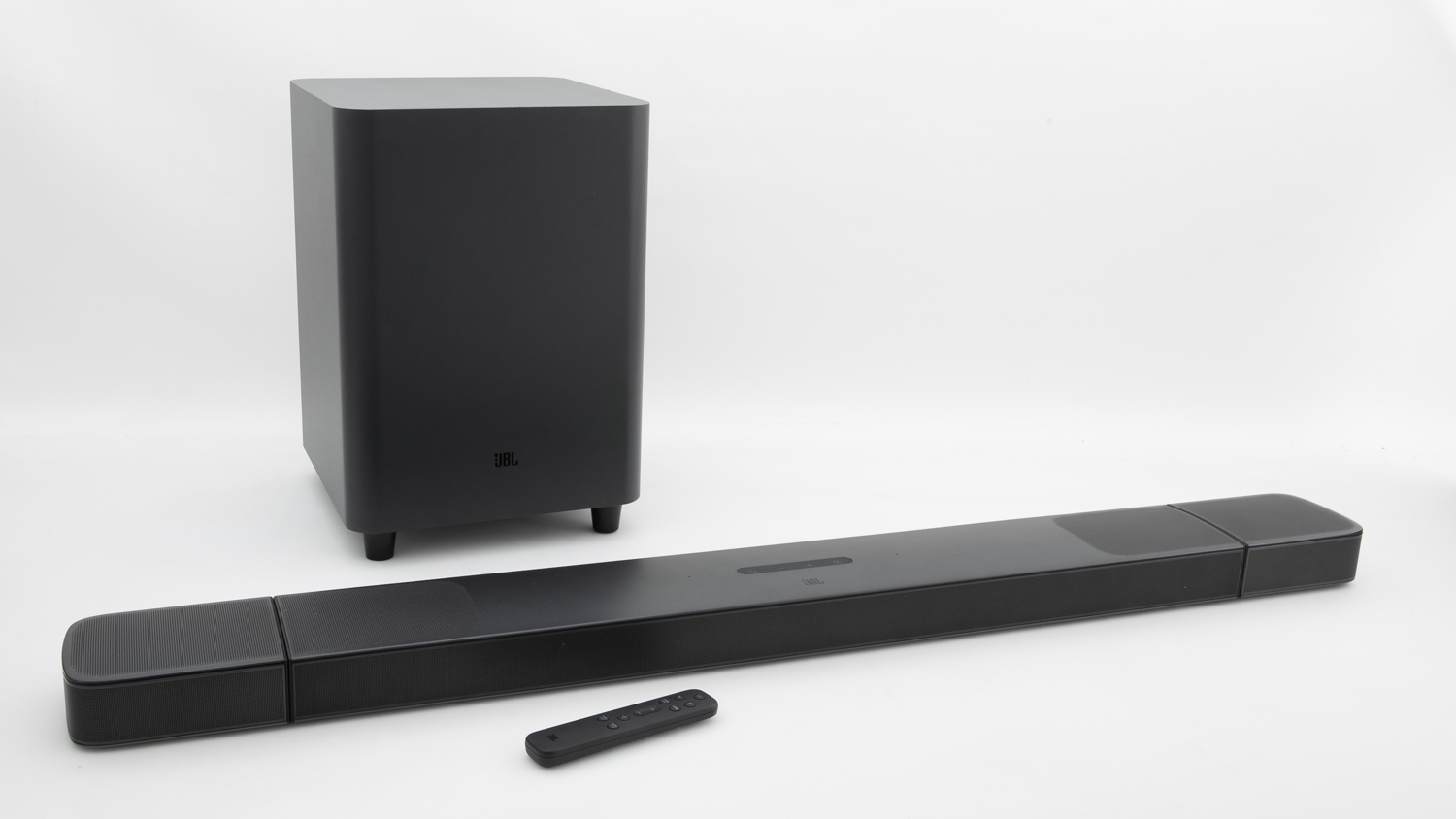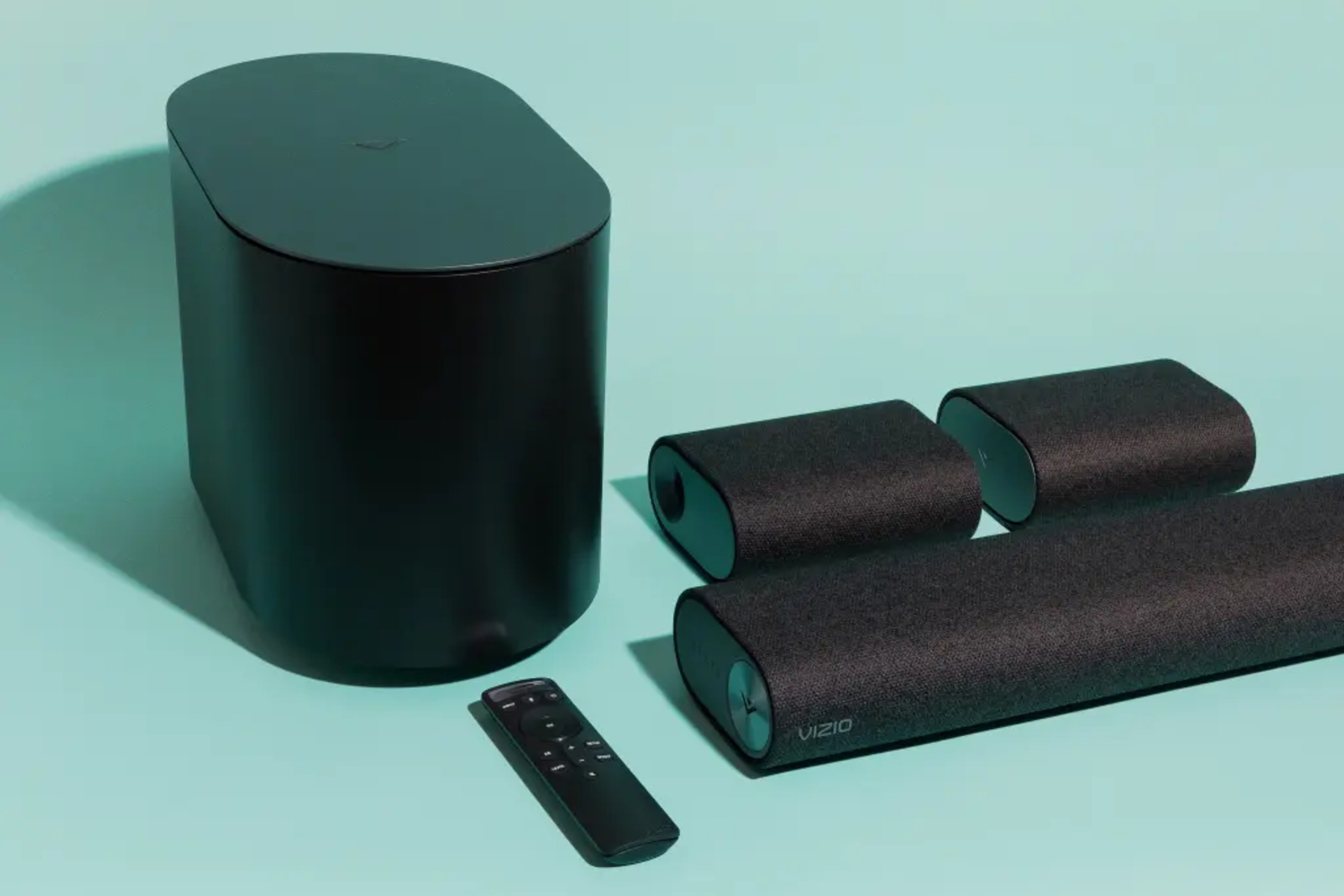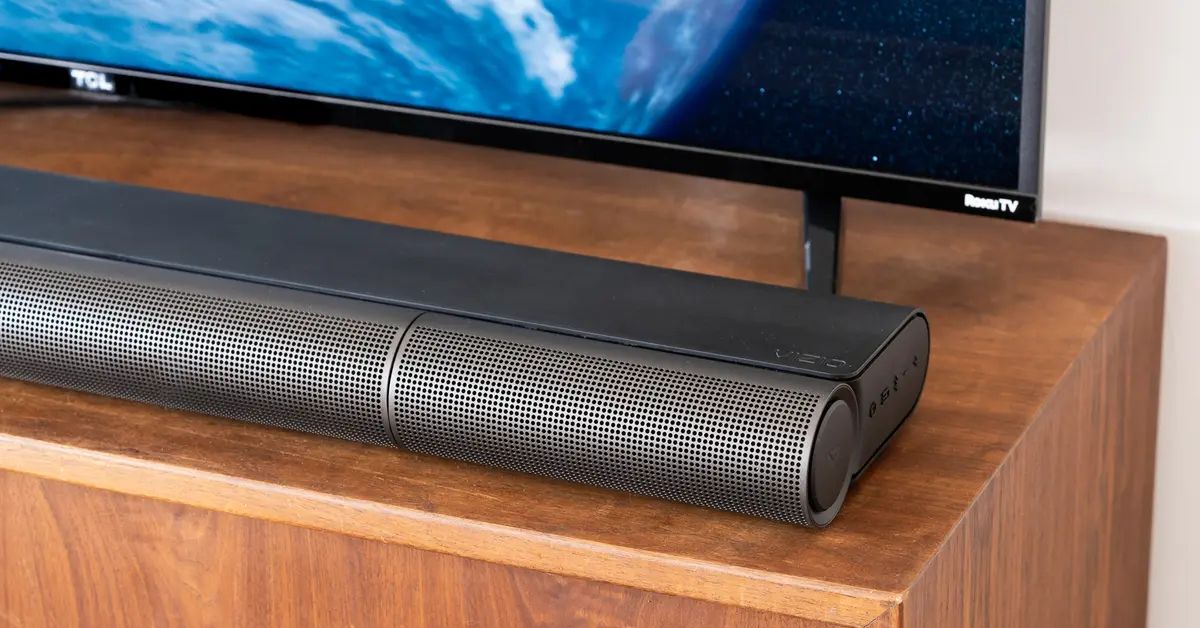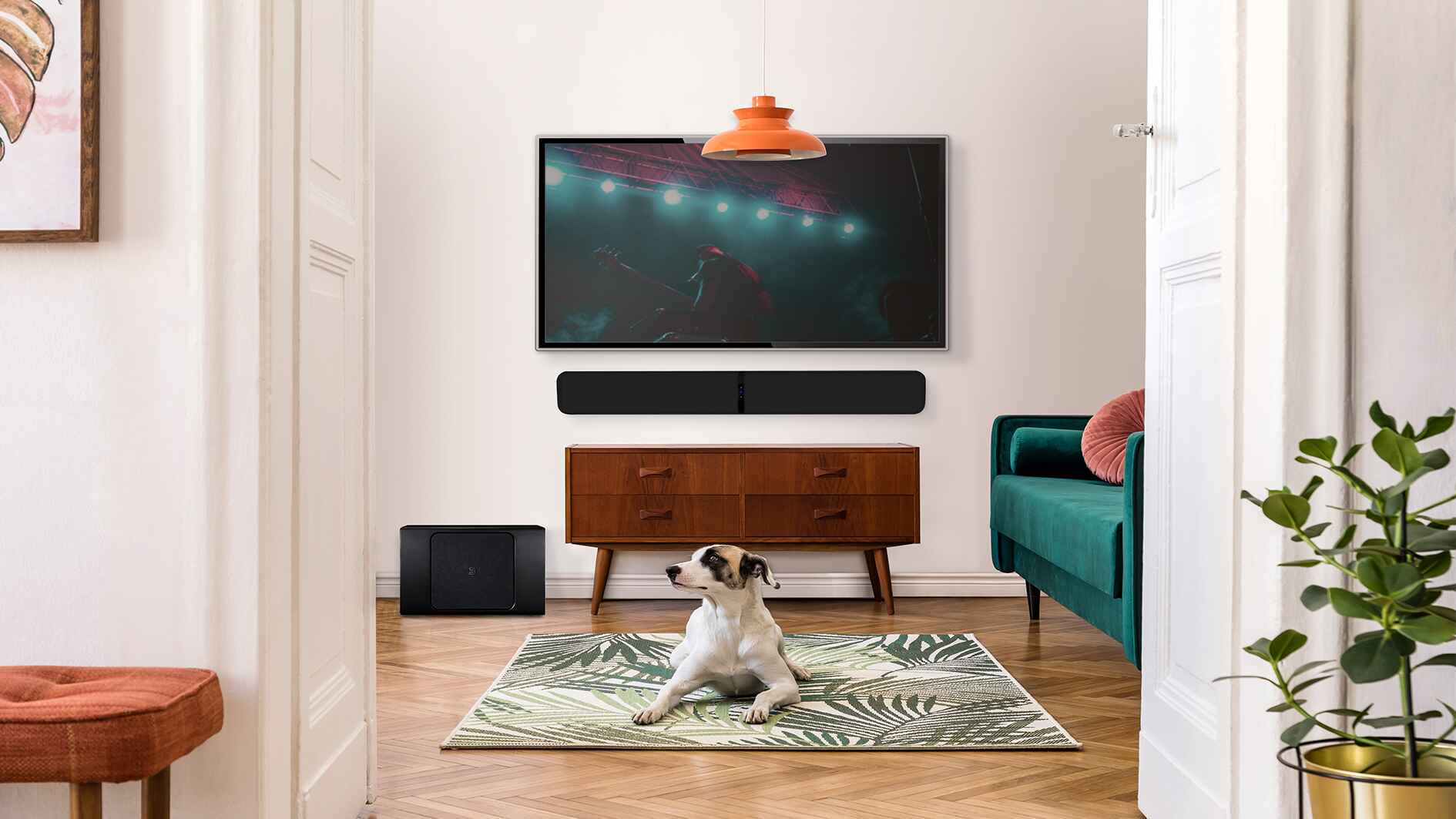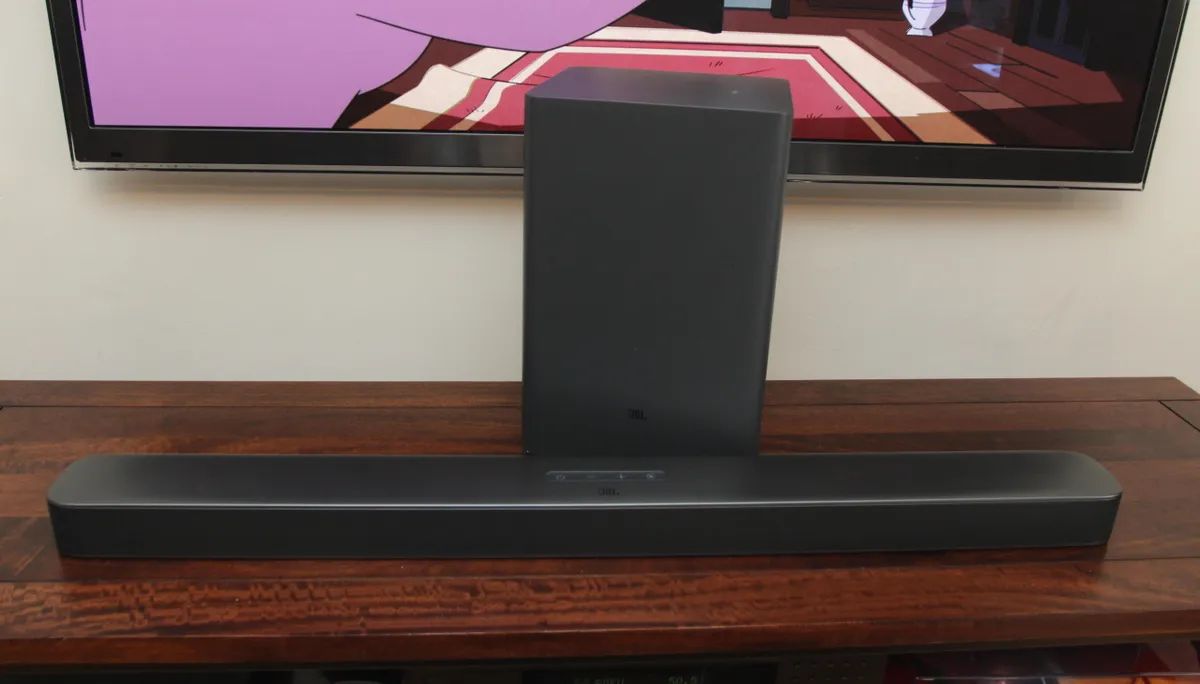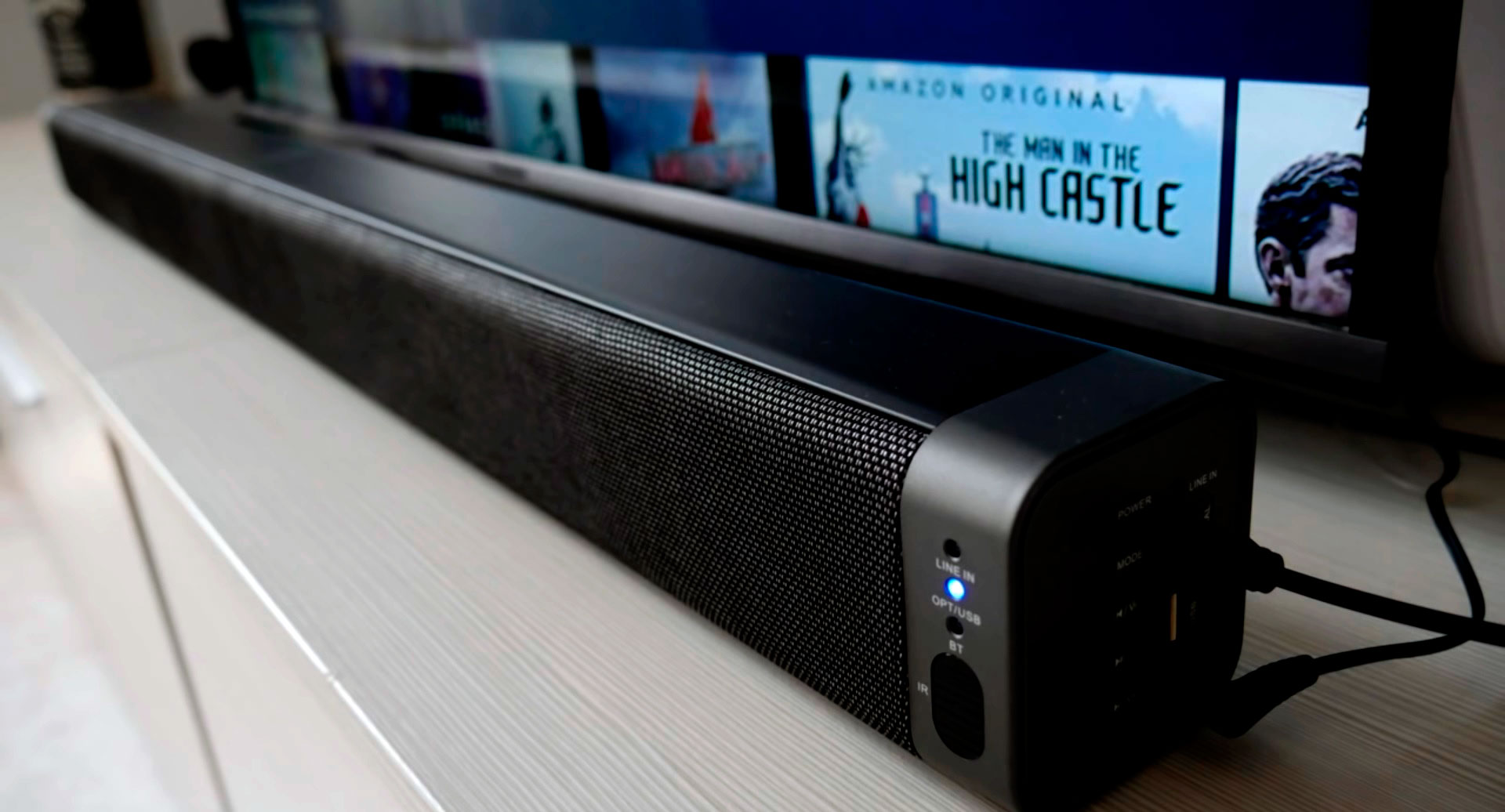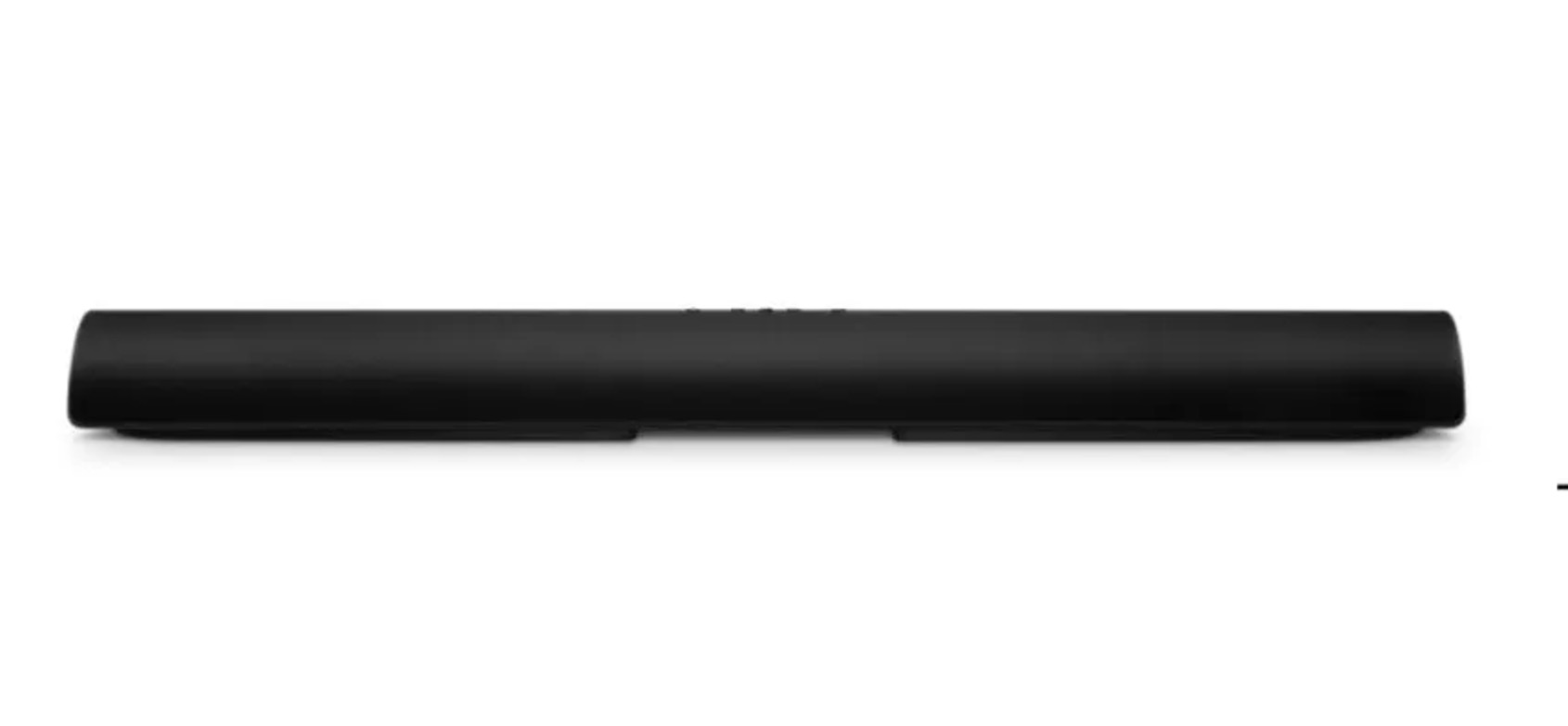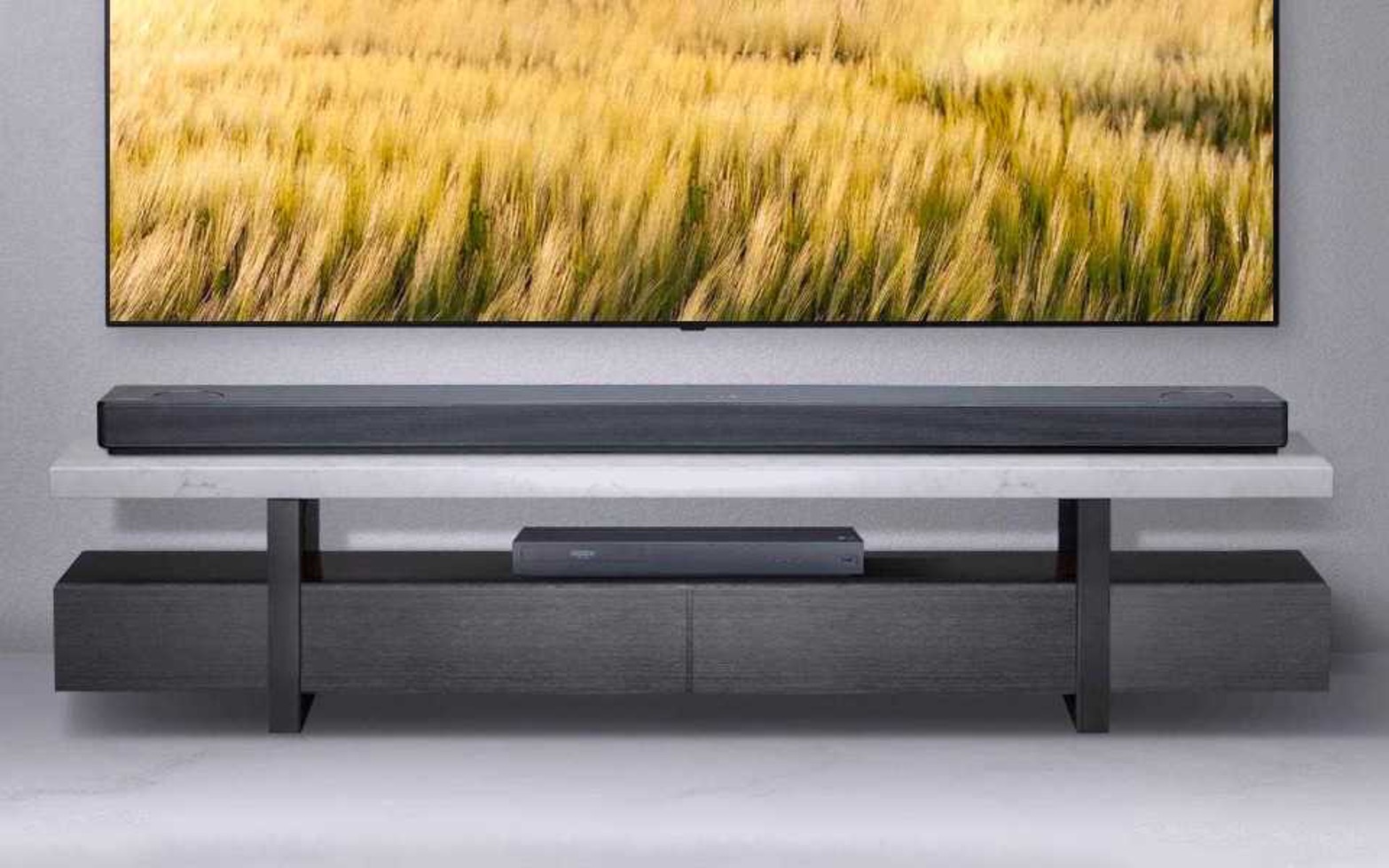Introduction
Welcome to our guide on how to choose the perfect soundbar for your audio needs. As technology has advanced, soundbars have become an increasingly popular option for enhancing the audio experience in homes. Whether you enjoy watching movies, playing video games, or simply listening to music, a well-chosen soundbar can significantly enhance the sound quality and overall immersion.
Soundbars are designed to deliver a superior audio performance compared to built-in TV speakers. They provide clearer dialogue, richer sound effects, and immersive surround sound, all in a sleek and compact form factor. With a wide range of soundbars available on the market, choosing the right one can be a daunting task. That’s why we’ve put together this comprehensive guide to help you navigate through the key factors to consider when making your decision.
In this guide, we’ll walk you through various aspects to consider when choosing a soundbar. We’ll discuss the importance of size and design, audio performance, connectivity options, the inclusion of a subwoofer, additional features, price range, brand reputation, and reviews from other users. By the end of this guide, you’ll have a better understanding of how to select the perfect soundbar that suits your specific needs.
Before we dive into the details, it’s worth mentioning that soundbars are not just for movie enthusiasts or audiophiles. They are a versatile audio solution for any home, offering an immersive experience for all types of media consumption. So whether you enjoy binge-watching your favorite shows, hosting movie nights, or simply want to enhance your daily TV viewing experience, a soundbar is a worthwhile investment.
Now, let’s explore the key factors to consider when choosing a soundbar that will deliver amazing audio enhancement and elevate your home entertainment experience.
Size and Design
The first aspect to consider when choosing a soundbar is its size and design. Soundbars come in various lengths, heights, and shapes, so it’s important to choose one that matches your TV and fits well in your living space.
For optimal performance, the length of the soundbar should ideally match the width of your TV. This ensures that the sound is evenly distributed and creates a more immersive experience. If your TV is mounted on the wall, make sure the soundbar’s length doesn’t exceed the width of your TV stand or cabinet. Additionally, consider the height of the soundbar to ensure it doesn’t block your TV’s infrared (IR) sensor or obstruct the view of the screen.
The design of the soundbar is also an important consideration, especially if you want it to seamlessly blend with your home decor. Some soundbars feature a sleek and understated design, while others come with stylish finishes or customizable covers. Choose a design that complements your TV and room aesthetics.
It’s worth noting that soundbars generally come in two types: traditional soundbars and pedestal soundbars. Traditional soundbars can be mounted on the wall or placed in front of the TV, while pedestal soundbars sit directly beneath the TV. Pedestal soundbars offer the advantage of saving space and provide a stable base for the TV. However, they may not suit all TV sizes or be suitable for wall-mounted TVs.
Another consideration is whether you prefer a wired or wireless soundbar. Wired soundbars require a physical connection between the soundbar and the TV, while wireless soundbars connect to the TV via Bluetooth or Wi-Fi. Wireless soundbars offer more flexibility in terms of placement and reduce clutter caused by cables. However, keep in mind that wireless soundbars may require additional power outlets or charging, so consider the availability of power sources in your setup.
When it comes to choosing the right size and design for your soundbar, take into account the dimensions of your TV, the layout of your room, and your personal preferences. By finding the perfect balance between size, design, and functionality, you can ensure that your soundbar enhances both your audio experience and your home’s aesthetics.
Audio Performance
One of the most important factors to consider when choosing a soundbar is its audio performance. The primary purpose of a soundbar is to enhance the sound quality of your TV or audio system, so it’s crucial to select a model that delivers exceptional audio performance.
The first aspect to consider is the power and wattage of the soundbar. Generally, the higher the wattage, the louder and more dynamic the sound. However, the size of your room should also be taken into account. A soundbar with excessive power may be too overwhelming for a smaller space, while a low-powered soundbar may not be sufficient for a large room. Strike a balance between power and room size to ensure optimal audio performance.
Next, consider the number of channels and drivers in the soundbar. Channels refer to the distribution of audio, with 2-channel soundbars providing left and right stereo sound, and higher-channel soundbars offering a more immersive surround sound experience. Additionally, the number and quality of drivers can greatly impact the sound clarity and depth. Look for soundbars with dedicated tweeters, mid-range drivers, and woofers for a more balanced and rich audio experience.
The inclusion of virtual surround sound technology is also worth considering. This feature utilizes advanced audio processing to create a wider soundstage and simulate the effect of surround sound speakers. Virtual surround sound can greatly enhance your movie-watching and gaming experiences, providing a more immersive and realistic sound environment.
Furthermore, pay attention to the soundbar’s frequency response range. A wider frequency response range allows the soundbar to reproduce a broader range of audio frequencies, resulting in more detailed and accurate sound reproduction. Look for soundbars that can produce low frequencies for deep bass as well as high frequencies for crisp and clear treble.
Lastly, consider the soundbar’s audio modes and equalizer settings. Some soundbars offer preset audio modes, such as movie, music, and dialogue, allowing you to optimize the sound settings for different types of content. Additionally, having access to manual equalizer settings enables you to fine-tune the audio according to your preferences and the acoustics of your room.
By considering factors like power, channels, drivers, virtual surround sound, frequency response, and audio modes, you can ensure that the soundbar you choose delivers an impressive audio performance that enhances your listening experience.
Connectivity Options
When choosing a soundbar, it’s important to consider the connectivity options it offers. This ensures that you can easily connect your soundbar to various audio sources and enjoy a seamless audio experience.
The most common connectivity option is HDMI, which provides high-quality digital audio and video transmission. Look for a soundbar with HDMI ARC (Audio Return Channel) support, as this allows you to connect the soundbar directly to your TV using a single HDMI cable. HDMI ARC also enables you to control the soundbar’s volume and power using your TV remote.
If your TV doesn’t have HDMI ARC, make sure the soundbar offers other connectivity options, such as optical or coaxial digital inputs. These connections transmit digital audio signals from your TV to the soundbar, ensuring high-quality sound reproduction.
Another important consideration is Bluetooth connectivity. Bluetooth allows you to wirelessly connect your smartphone, tablet, or other Bluetooth-enabled devices to the soundbar, enabling you to stream audio wirelessly. This is particularly useful for playing music or audio from streaming services without the need for additional cables.
Wi-Fi connectivity is another feature to look for, as it offers even greater flexibility for audio streaming. Soundbars with Wi-Fi connectivity can connect to your home network, allowing you to stream music from online services, such as Spotify or Apple Music, directly through your soundbar. Some Wi-Fi-enabled soundbars also support multi-room audio, allowing you to create a wireless audio system throughout your home.
In addition to these wireless connectivity options, it’s also beneficial to have auxiliary (AUX) or USB inputs on the soundbar. AUX inputs enable you to connect devices like MP3 players or laptops using a standard audio cable, while USB inputs allow you to play audio files directly from a USB flash drive.
Lastly, consider if the soundbar offers compatibility with voice assistants, such as Amazon Alexa or Google Assistant. This allows you to control your soundbar using voice commands, providing a convenient and hands-free experience.
By considering the connectivity options that are important to you, you can ensure that the soundbar seamlessly integrates with your existing audio setup and provides effortless connectivity to a wide range of devices.
Subwoofer
A subwoofer is an important component to consider when choosing a soundbar, as it greatly enhances the low-frequency performance and adds depth to your audio experience. While some soundbars come with built-in subwoofers, others require a separate subwoofer unit for optimal bass reproduction.
A built-in subwoofer in a soundbar offers convenience and saves space. These soundbars often have larger drivers and dedicated amplifiers to produce deep bass frequencies. Built-in subwoofers are a good option if you have limited space or prefer a more compact setup.
On the other hand, a separate subwoofer unit provides even more powerful and impactful bass. It allows for a better separation of low-frequency sounds, resulting in a more immersive and realistic audio experience. The subwoofer can be placed anywhere in the room, as its purpose is to create deep bass effects rather than being directly tied to the positioning of the soundbar.
When considering a soundbar with a separate subwoofer, pay attention to the connectivity between the soundbar and subwoofer. Some models feature wireless subwoofers that can be placed in any convenient location within range, eliminating the need for extra cables. This allows for greater flexibility in subwoofer placement and reduces cable clutter.
It’s important to note that not all soundbars are compatible with external subwoofers. If you want the option to add a separate subwoofer in the future, ensure that the soundbar has a dedicated subwoofer output or support for a wireless subwoofer kit.
Having a subwoofer in your soundbar setup significantly enhances your audio experience, especially when watching movies or listening to music with heavy bass. The added depth and impact can make action scenes more thrilling and music more immersive. However, if you primarily watch news or TV shows with minimal bass content, a soundbar without a subwoofer may still provide satisfactory audio performance.
Consider your personal audio preferences and the type of content you consume when deciding whether to choose a soundbar with a built-in subwoofer or invest in a separate subwoofer unit. Regardless of your choice, having a subwoofer will undoubtedly elevate the overall audio quality and contribute to a more enjoyable listening experience.
Additional Features
When choosing a soundbar, it’s worth considering the additional features that can enhance your audio experience and provide added convenience. These features can vary depending on the model and brand, so it’s important to identify the ones that align with your specific needs and preferences.
One common additional feature is the presence of built-in audio technologies, such as Dolby Atmos or DTS:X. These technologies create a more immersive audio experience by simulating three-dimensional sound, giving you the feeling of sound coming from all directions. If you enjoy watching movies or playing video games with realistic audio effects, look for a soundbar that supports these advanced audio technologies.
Some soundbars also offer built-in smart capabilities, allowing you to stream music, control smart home devices, and access various apps directly from the soundbar. Smart soundbars typically have Wi-Fi connectivity and integrated voice assistants like Amazon Alexa or Google Assistant. These features provide a seamless integration with your smart home ecosystem, enabling voice control and convenient streaming of your favorite music services.
Another useful feature to consider is the presence of HDMI inputs and outputs. Additional HDMI inputs allow you to connect other devices, such as Blu-ray players or gaming consoles, directly to the soundbar. This eliminates the need for separate audio connections and ensures that all audio sources are routed through the soundbar, delivering consistent and high-quality audio.
Several soundbars also come with a remote control that offers intuitive and easy-to-use controls. Look for a remote with well-labeled buttons and a clear layout, making it simple to adjust volume, switch audio modes, or access specific settings. Some soundbars even offer smartphone apps that allow you to control the soundbar wirelessly through your mobile device.
A few soundbars also offer the option of adding rear speakers for a true surround sound experience. These rear speakers, when placed behind the listener, can create an immersive soundstage and enhance the surround sound effect. If you desire a more complete and immersive audio setup, consider soundbars that support expandability with additional wireless or wired rear speakers.
Finally, pay attention to energy-saving features. Some soundbars have a standby mode that automatically powers off when not in use, helping to conserve energy and reduce electricity costs. Look for soundbars with energy-saving certifications, such as Energy Star, to ensure greater efficiency and environmental friendliness.
By considering the additional features that align with your audio preferences and lifestyle, you can choose a soundbar that not only delivers exceptional audio performance but also provides added functionality and convenience.
Price Range
When it comes to choosing a soundbar, price is an important factor to consider. Soundbars can vary in price depending on their features, brand, and overall audio quality. It’s essential to determine your budget and understand what you’re getting in different price ranges.
Entry-level soundbars typically range from $100 to $300. These soundbars usually offer basic audio performance and essential connectivity options like HDMI and optical inputs. While they may not have advanced features like built-in subwoofers or virtual surround sound, they can still provide a significant improvement over TV speakers at an affordable price.
Mid-range soundbars typically range from $300 to $700. In this price range, you can expect better audio quality, more connectivity options, and additional features like built-in subwoofers, smart capabilities, and compatibility with advanced audio technologies. These soundbars offer a good balance between price and performance, making them suitable for most users who want a quality audio experience without breaking the bank.
High-end soundbars typically start from $700 and can go up to several thousand dollars. These soundbars are designed to deliver exceptional audio performance, advanced features, and premium build quality. They often come with multiple channels, dedicated subwoofers, and support for technologies like Dolby Atmos. High-end soundbars also offer more connectivity options, better materials, and superior craftsmanship. These soundbars are ideal for audiophiles or those who want to create a high-end home theater setup.
While it’s tempting to go for the most expensive soundbar in the market, it’s important to consider your specific needs and budget. Determine the features and performance level that are most important to you and find a soundbar that fits within your price range. It’s worth noting that soundbars from reputable brands often provide a better overall experience in terms of audio quality, build quality, and customer support.
Additionally, keep an eye out for sales and discounts, as soundbars often go on sale during holiday seasons or special promotions. This can be a great opportunity to grab a high-quality soundbar at a more affordable price.
Remember, the goal is to find a soundbar that meets your requirements without straining your budget. By understanding the price range and features available, you can make an informed decision and find the perfect soundbar that offers the best value for your money.
Brand and Warranty
When it comes to purchasing a soundbar, considering the brand and warranty is an important aspect of the decision-making process. Opting for a reputable brand not only ensures a quality product but also provides peace of mind and reliable customer support.
Well-established brands have a proven track record of delivering high-quality audio products. They invest in research and development, ensuring that their soundbars offer excellent performance, durability, and innovative features. Moreover, reputable brands often have a dedicated customer support team to assist with any technical issues or questions you may have.
It’s also worth considering the brand’s reputation for after-sales service and warranty coverage. A comprehensive warranty is crucial as it protects your investment and provides coverage for any potential defects or malfunctions. Look for soundbars that offer at least 1-2 years of warranty coverage, and make sure to read the warranty terms and conditions to understand what is and isn’t covered.
Consider reading reviews and checking customer feedback on the brand’s reputation for honoring warranties and providing excellent customer service. This will give you an idea of the brand’s commitment to their customers and how they handle any potential issues that may arise.
It’s worth noting that while reputable brands may have higher price tags, they often provide a better overall experience due to their commitment to quality, ongoing support, and reliable warranty coverage. However, this doesn’t mean that lesser-known brands can’t offer good products. It’s important to do thorough research and read reviews to determine if a lesser-known brand meets your requirements and has positive feedback from customers.
Additionally, you may want to consider the availability of accessories and software updates from the brand. Some brands offer a range of accessories like wall mounts, stands, or wireless rear speaker kits that can enhance your soundbar setup. Regular software updates also ensure that your soundbar remains up-to-date with the latest features and enhancements.
By choosing a soundbar from a reputable brand with a solid warranty and good customer service, you can have confidence in your purchase and enjoy a hassle-free ownership experience. Invest in a brand that has a history of delivering quality audio products and stands behind their products with comprehensive warranty coverage.
Reviews and Recommendations
Reading reviews and seeking recommendations from trusted sources is a valuable step in the process of choosing a soundbar. These insights from other users can provide valuable information about the performance, durability, and overall satisfaction with a particular soundbar model.
One of the best ways to gather reviews is by checking online retailers’ websites. Look for soundbars with a significant number of positive reviews and high ratings. Pay attention to the specific features or aspects of the soundbar that reviewers praise, such as audio quality, connectivity options, ease of use, or build quality. Similarly, take note of any recurring complaints or issues that users mention to get a comprehensive view.
Another great source of reviews is technology websites and audio-focused publications. These platforms often provide in-depth, unbiased reviews that assess sound quality, features, and overall performance. They may also compare different soundbar models, making it easier for you to make an informed decision based on your specific needs and preferences.
Seeking out recommendations from friends, family, or colleagues who already own a soundbar can also be helpful. They can share their firsthand experience and provide insights into what works well for them. However, keep in mind that individual preferences and requirements may vary, so it’s essential to consider these recommendations in conjunction with other sources of information.
It’s worth mentioning that while reviews and recommendations can be influential in your decision-making process, it’s important to filter and evaluate them critically. Consider the credibility of the source and look for a consensus across multiple reviews to get a more accurate picture of the soundbar’s performance.
Lastly, it can be valuable to check forums and discussion boards where users share their experiences and ask questions about specific soundbars. This can provide additional insights and help address any specific concerns or questions you may have.
By taking the time to read reviews and gather recommendations, you can gain valuable insights into the soundbar models you are considering. The experiences and feedback from other users can help you make a more informed decision and select a soundbar that best suits your audio needs and preferences.
Conclusion
Choosing the right soundbar involves considering various factors to ensure an optimal audio experience. By examining the size and design, audio performance, connectivity options, presence of a subwoofer, additional features, price range, brand reputation, and reviews, you can make an informed decision that aligns with your preferences and budget.
Consider the size and design of the soundbar, ensuring it complements your TV and fits well in your space. Evaluate the audio performance by assessing the power, channels, drivers, and virtual surround sound capabilities to find a soundbar that delivers the desired audio quality.
Explore the connectivity options, such as HDMI, Bluetooth, Wi-Fi, and auxiliary inputs, to ensure compatibility with your existing audio sources. Determine whether you prefer a soundbar with a built-in subwoofer or the option to add a separate one for enhanced bass performance.
Additional features like built-in audio technologies, smart capabilities, HDMI inputs and outputs, intuitive remote controls, expandability with rear speakers, and energy-saving features can further enhance your soundbar experience.
Take into account the price range that fits your budget, considering the trade-offs between performance and features at different price points. Prioritize reputable brands that offer comprehensive warranties and reliable customer support to ensure peace of mind and long-term satisfaction.
Lastly, read reviews and seek recommendations from trusted sources to gain insights from other users’ experiences. Consider their feedback alongside professional reviews to get a comprehensive view of the soundbar’s performance, build quality, and overall satisfaction.
By evaluating these various factors and making an informed decision, you can choose a soundbar that enhances your audio experience, immersing you in a world of enhanced sound, whether it’s for movies, TV shows, music, or gaming. With the right soundbar, you can transform your living space into a home theater and enjoy a rich and immersive audio experience like never before.







